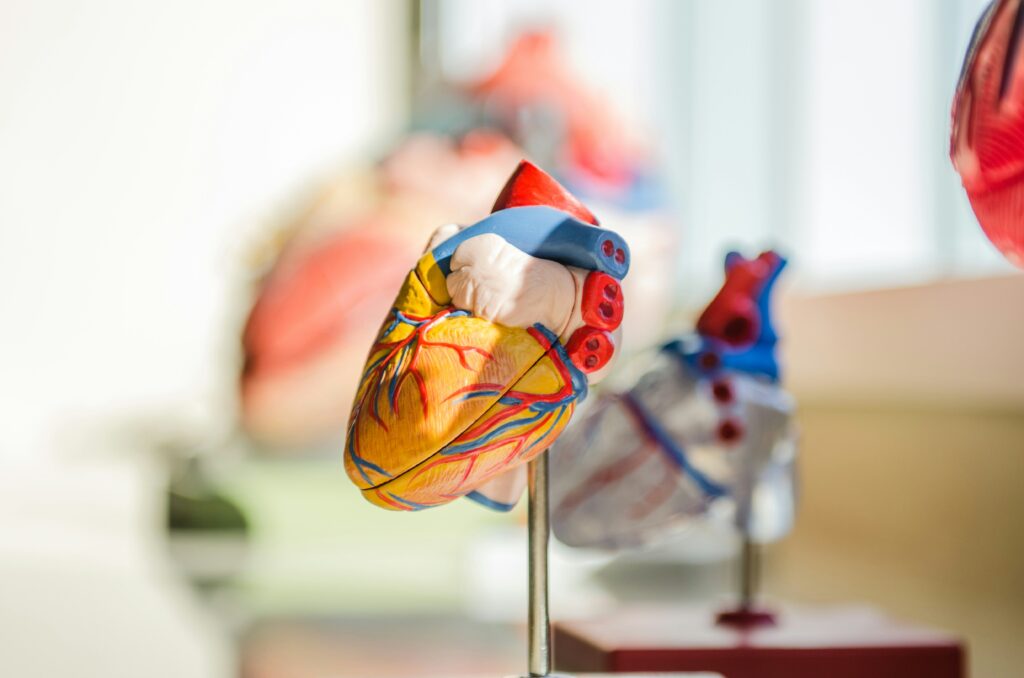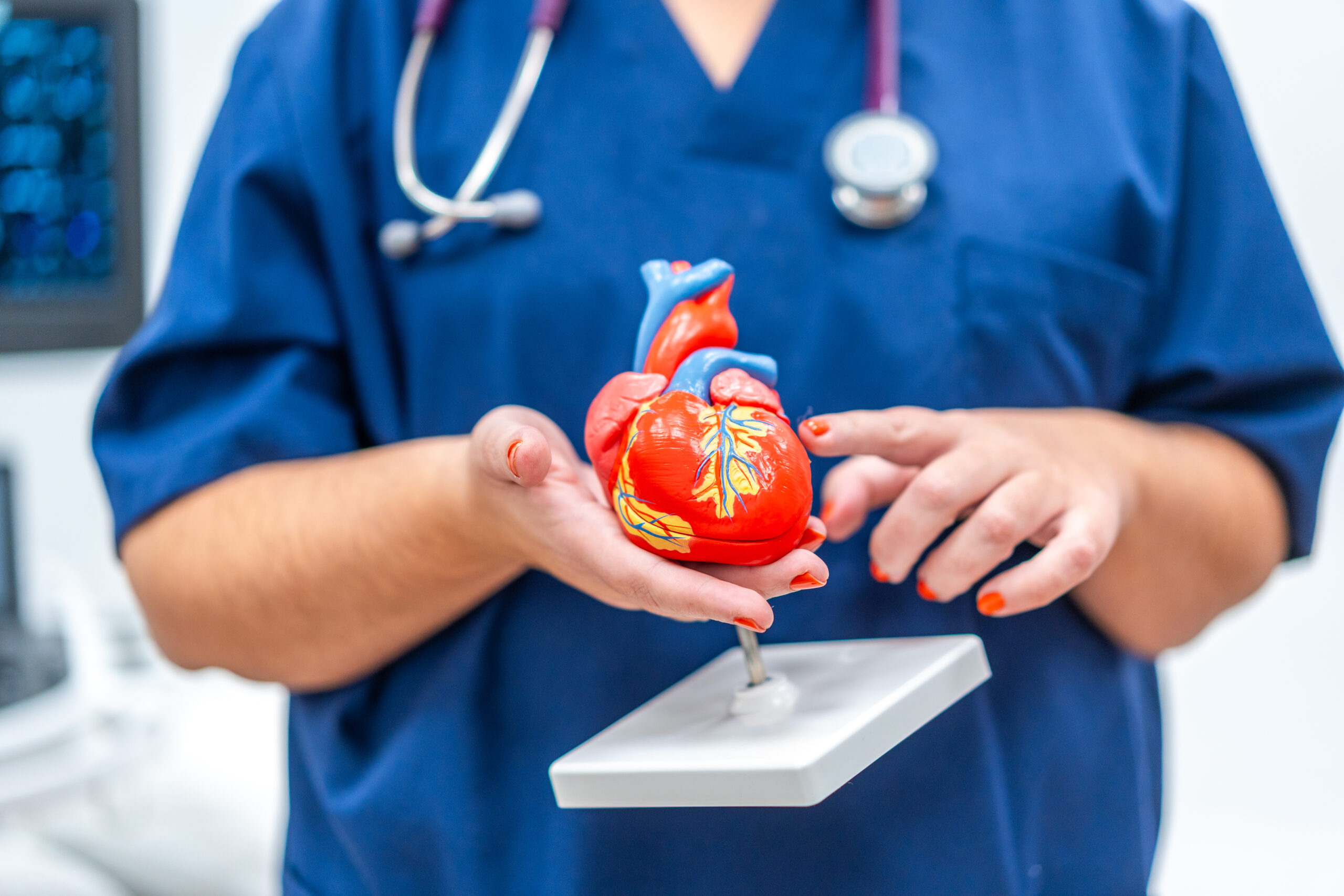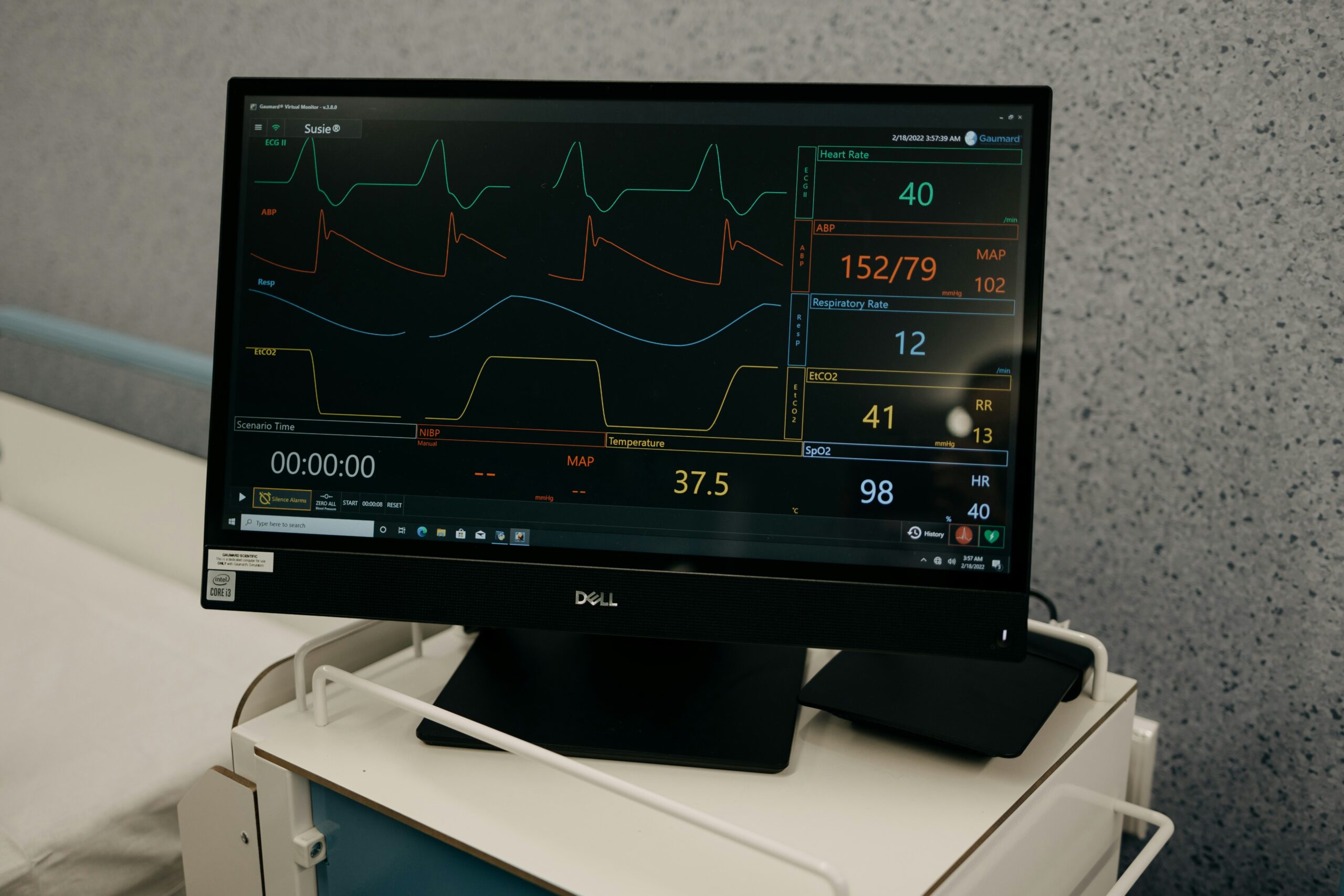
Exploring the Anatomy: Understanding Heart Pain on the Left Side
Unveiling the Complexity: Understanding the Intricate Anatomy Behind Left-Sided Heart Pain
Imagine your heart as the central engine in the intricate machinery of your body. Nestled slightly to the left of your chest, this powerhouse tirelessly pumps life-sustaining blood throughout your system. But when you experience heart pain on the left side, this vital organ suddenly becomes the focal point of concern. So, what’s happening under the hood, and why does pain manifest specifically on the left side?
The heart sits in the thoracic cavity, protected by the ribcage and flanked by the lungs. It’s composed of four chambers—two atria and two ventricles—that collaborate to keep blood flowing seamlessly. When the heart experiences stress or strain, pain can arise. But why the left side? The answer lies in the heart’s positioning and its surroundings.
The left ventricle, tasked with pumping oxygen-rich blood to the entire body, exerts significant force. Therefore, any disruption here, such as a blockage in the coronary arteries, can trigger discomfort or pain. This is why heart pain on the left side often raises alarms—it could signal something as serious as a heart attack or angina. American Heart Association: Signs of Heart Attack
However, it’s crucial to recognize that not all left-sided chest pain is heart-related. The left side of your chest is a busy intersection of structures, including muscles, bones, and nerves. For instance, if you’ve ever strained a muscle during exercise or felt a sharp tug when carrying something heavy, you’ll know that musculoskeletal issues can mimic heart pain quite convincingly.
Additionally, the esophagus runs near the heart. Issues such as acid reflux can cause pain that feels heart-related. This phenomenon, known as referred pain, occurs because the brain sometimes struggles to pinpoint the exact source of discomfort, given the proximity of the organs involved.
Understanding the anatomy behind left-sided heart pain is like learning a new language. Once you grasp how the heart and its neighbors interact, you can better decipher the signals your body sends. Imagine the heart as a well-orchestrated symphony, where each instrument plays a role. When one instrument falters, the entire performance is affected, and it’s crucial to identify whether it’s the heart or its supporting players causing the discord.
In summary, while left-sided chest pain can understandably cause alarm, knowledge of the heart’s anatomy and its surrounding structures can help demystify the experience. By contemplating the heart’s complex ecosystem, we are better equipped to differentiate between harmless pangs and signals that warrant medical attention. Remember, your heart is speaking—are we listening?
Is It Serious? Identifying Heart-Related Causes of Left-Sided Chest Pain
Understanding the Red Flags: Key Symptoms That Distinguish Heart-Related Chest Pain on the Left Side
Picture this: you’re going about your day, and suddenly, a discomfort in your chest draws your attention. It’s on the left side, and your mind immediately races to the possibility of heart trouble. But how do you determine if this heart pain on the left side is something to worry about? Let’s explore the red flags that could indicate a more serious heart-related issue.
First and foremost, it’s essential to recognize the classic symptoms of a heart attack, as they often involve the left side of the chest. This pain is typically described as a sensation of pressure, squeezing, or fullness. It can radiate to the left arm, shoulder, neck, back, or even the jaw. The discomfort might be accompanied by shortness of breath, cold sweats, nausea, or lightheadedness. If these symptoms sound familiar, it’s vital to seek immediate medical attention.
Another condition linked to left-sided chest pain is angina. Angina occurs when the heart muscle doesn’t receive enough blood and oxygen, often due to narrowed or blocked coronary arteries. Angina pain is usually triggered by physical exertion or stress and tends to subside with rest or medication like nitroglycerin. However, if the pain persists or worsens, it could indicate unstable angina or a heart attack.
It’s also worth considering pericarditis, an inflammation of the pericardium—the sac surrounding the heart. This condition can cause sharp, stabbing pain on the left side, which may worsen with deep breaths or lying down. While pericarditis is less common than other heart-related causes, it’s still a serious condition that requires medical evaluation.
Despite these serious possibilities, it’s important to remember that not all left-sided chest pain is heart-related. For instance, costochondritis, an inflammation of the cartilage connecting the ribs to the breastbone, can mimic heart pain but is generally benign. Similarly, gastrointestinal issues, like acid reflux, can cause discomfort that feels heart-related due to the close proximity of the esophagus to the heart.
So, how do we differentiate? The key lies in the combination and intensity of symptoms. If chest pain is severe, persistent, or accompanied by other alarming signs such as difficulty breathing or fainting, erring on the side of caution is wise. Think of your body as a finely tuned instrument; any discordant notes, particularly when it comes to heart pain on the left side, deserve attention.
In conclusion, while not every twinge is indicative of a heart attack, understanding the red flags can empower us to act swiftly when it truly matters. It’s about tuning into our body’s signals and knowing when to seek expert advice. Remember, when it comes to our hearts, it’s better to be safe than sorry.
Beyond the Obvious: Less Common But Serious Causes of Left-Sided Chest Pain
Looking Beyond the Norm: Investigating Unusual Culprits Behind Left-Sided Chest Discomfort
When we think of heart pain on the left side, our minds often jump to heart attacks or angina, the usual suspects when it comes to chest discomfort. But what if the culprit is lurking just outside the spotlight? Let’s shine a light on some less common yet serious causes of left-sided chest pain that deserve our attention.
One intriguing possibility is aortic dissection, a life-threatening condition where a tear occurs in the inner layer of the aorta, the major artery carrying blood from the heart. The result? Blood surges between the aorta’s layers, causing severe, tearing pain that can radiate to the back. If you experience sudden, intense pain on the left side along with symptoms like dizziness or a weak pulse, it’s crucial to seek emergency care immediately.
Pulmonary embolism is another serious condition to consider. This occurs when a blood clot blocks a lung artery, leading to chest pain that may mimic heart-related issues. However, with a pulmonary embolism, the pain often sharpens with deep breaths, and it may be accompanied by shortness of breath, rapid heartbeat, and coughing up blood. This is a medical emergency that requires prompt treatment.
Then there’s pneumothorax, or a collapsed lung, which can cause sharp pain on one side of the chest, including the left. This can occur spontaneously or as a result of trauma. The pain is usually sudden and may be accompanied by difficulty breathing and a rapid heart rate. Though less common, understanding this possibility can help differentiate it from heart-related pain.
Another potential source of left-sided chest pain is esophageal spasm. This condition involves abnormal muscle contractions in the esophagus, the tube connecting your mouth to your stomach. The pain can closely mimic angina, but it’s often related to swallowing and might be accompanied by a sensation of food being stuck.
Finally, consider myocarditis, an inflammation of the heart muscle, often due to infection. This can cause left-sided chest pain, fatigue, and irregular heartbeats. Although rarer, it underscores the importance of considering a wide range of possibilities when evaluating chest pain.
Navigating the maze of potential causes for left-sided chest pain can feel overwhelming, much like solving a complex puzzle. However, by understanding these less common conditions, we can better appreciate the breadth of possibilities and respond appropriately.
In essence, while heart pain on the left side certainly demands our vigilance, broadening our scope beyond the obvious can help ensure that we address all potential threats to our health. Remember, our bodies are complex systems, and sometimes, the unexpected deserves a closer look.
When to Seek Help: Recognizing the Signs of Anxiety and Left-Sided Chest Pain
Listening to Your Body: Understanding the Intersection of Anxiety and Physical Symptoms on the Left Side
Have you ever felt your heart racing, palms sweating, and a sudden grip of chest pain on the left side, only to realize it was anxiety, not a heart attack, causing the chaos? Anxiety can be a master of disguise, presenting itself with physical symptoms that mimic heart-related issues. Let’s explore how anxiety and left-sided chest pain intersect and when it’s time to seek help.
Anxiety disorders, including panic attacks, can manifest as intense episodes of fear accompanied by physical symptoms such as chest pain, shortness of breath, and palpitations. These episodes can be so convincing that many rush to the emergency room, fearing a cardiac event. The key difference, however, is that anxiety-induced chest pain often accompanies feelings of impending doom, tingling sensations, or a sense of detachment from reality.
When anxiety strikes, the body’s “fight or flight” response kicks in, releasing stress hormones like adrenaline. This response can lead to hyperventilation, increased heart rate, and muscle tension—all of which can contribute to sensations of heart pain on the left side. The pain is typically sharp or stabbing and may resolve as the anxiety subsides.
It’s important to recognize the triggers that might lead to these anxiety episodes. Stress, caffeine, lack of sleep, or even certain medications can exacerbate symptoms. Keeping a journal to track these triggers can be an invaluable tool in managing anxiety and its physical manifestations.
However, while anxiety can cause chest pain, it’s crucial not to dismiss all left-sided chest pain as anxiety-related without proper evaluation. If you’re experiencing chest pain for the first time, or if the pain is severe, persistent, or accompanied by other alarming symptoms like fainting, it’s important to seek medical advice to rule out any cardiac issues.
In managing anxiety-induced chest pain, techniques such as deep breathing, mindfulness, and progressive muscle relaxation can be effective. Cognitive-behavioral therapy (CBT) is also a proven method for addressing the root causes of anxiety and modifying thought patterns that contribute to physical symptoms.
In conclusion, while the overlap between anxiety and heart pain on the left side can be confusing, understanding the nuances can help us navigate these episodes with more confidence. By tuning into our bodies and recognizing when anxiety is the culprit, we can take proactive steps to manage our symptoms. Remember, it’s about striking a balance between acknowledging the power of our minds and honoring the signals from our bodies.
Physical Wellness: How Exercise and Healthy Habits Impact Left-Sided Heart Pain
Strengthening Your Heart: Exploring the Impact of Physical Activity on Left-Sided Chest Discomfort
Imagine your heart as a muscular engine, one that thrives on regular maintenance and fine-tuning. Just like any well-functioning machine, our hearts benefit enormously from regular exercise and healthy habits. These lifestyle choices not only enhance overall cardiovascular health but can also play a significant role in reducing episodes of heart pain on the left side.
Regular physical activity is a cornerstone of heart health. It helps improve circulation, lowers blood pressure, and reduces bad cholesterol levels—all of which contribute to a stronger heart. Engaging in activities like brisk walking, cycling, or swimming for at least 150 minutes a week can significantly bolster heart function. This consistent exercise routine acts as a protective shield, reducing the likelihood of experiencing left-sided chest pain related to heart issues.
But what if you’re already experiencing heart pain on the left side? It’s crucial to approach exercise with caution. Begin with low-impact activities and gradually increase intensity as your body adapts. Listen to your body—if pain arises during exercise, it’s wise to stop and consult a healthcare professional before continuing.
Beyond exercise, other healthy habits play a pivotal role in managing left-sided chest pain. Nutrition, for instance, is a powerful ally. A diet rich in fruits, vegetables, whole grains, and lean proteins supports heart health by providing essential nutrients and antioxidants. Foods high in omega-3 fatty acids, such as salmon and walnuts, are particularly beneficial for reducing inflammation and supporting cardiovascular function.
Additionally, managing stress through techniques like yoga, meditation, and deep breathing can significantly impact heart health. Chronic stress can lead to elevated cortisol levels, which may contribute to heart pain on the left side. By incorporating stress-reduction practices into your daily routine, you create a more resilient environment for your heart to flourish.
Quitting smoking and moderating alcohol consumption are also critical steps in preventing and managing heart pain. Smoking damages blood vessels and reduces oxygen flow to the heart, while excessive alcohol intake can raise blood pressure and contribute to heart disease.
In summary, adopting a holistic approach to physical wellness can profoundly influence the frequency and severity of left-sided chest pain. By embracing regular exercise, nourishing your body with healthy foods, and managing stress, you’re not only strengthening your heart but also enhancing your overall quality of life. Remember, your heart is a remarkable engine—let’s fuel it with the care and attention it deserves.
Also read in our article: Work-life Balance: How It Impacts Your Cardiovascular Health


